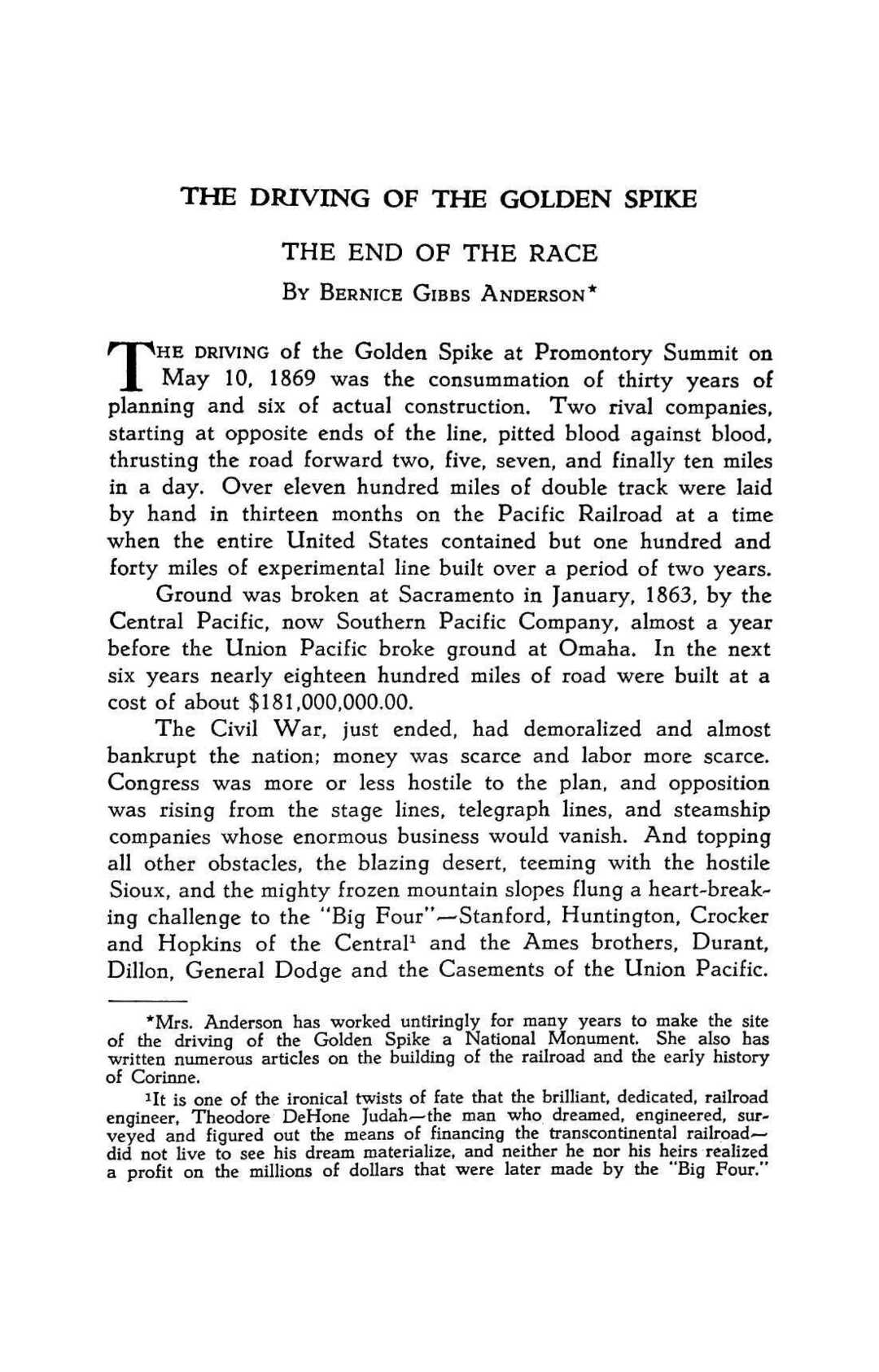
3 minute read
Centennials
Utah Historical Quarterly
Vol. 24, 1056, Nos. 1-4
CENTENNIALS
JULY, 1947, marked the first of Utah's great centennial celebrations. As all the world knows that month, a hundred years before, had witnessed the entry of the Mormon pioneers into the valley of the Great Salt Lake. Almost immediately expansion began to the north, south, east, and west, and within a very few years, settlements were scattered all over the Great Basin. Beginning then with the great state-wide centennial in 1947, successive celebrations have been held throughout the state, and will continue to be held through the coming years until the cycle of bicentennials commences nearly a hundred years from now.
During 1956 Utah celebrates the one hundreth birthday of several counties, cities and smaller communities, and several institutions, some of which continue to prosper and serve the state. During the winter of 1855-56, the first and only full session (fifth) of the territorial legislature to meet at Fillmore was convened. This session of the legislature, in acts approved in January created nine counties, only three of which still exist. The names and locations of the defunct counties, most of which never really existed except on paper, are quite interesting. Humboldt and St. Mary's occupied what is now the northeast quarter of the state of Nevada. Greasewood County occupied what would amount to the western half of the present county of Box Elder. Malad, on the other hand, occupied a considerable portion of the northern part of Box Elder and extended over the present Utah- Idaho line into the Malad River Valley of southern Idaho. Cedar County lay immediately to the west of present Utah County and eventually was absorbed by that county and Toole. Shambip lay immediately to the west of Cedar County and now forms a portion of Tooele.
Of the counties created in 1856 and still in existence, Cache County, practically co-extensive with Cache Valley, like several other Utah counties, was actually created before settlement took place. However, in September of 1856, Wellsville was established by a group of settlers under Peter Maughan, and soon thereafter other settlements sprang up throughout the county. On the other hand, Box Elder County, created this same year, already had communities which had been administered as a portion of the original Weber County. Beaver County also dates from 1856, along with its county seat, Beaver City. Other communities which reach the century mark during the coming year are Mapleton and Salem in Utah County, Charleston in Wasatch County, and Pinto and Washington in Washington County far to the south in Utah's Dixie.
The initial and somewhat tragic experiment with handcarts as a means of overland travel took place during the summer and fall of 1856. Of the five companies, numbering approximately eighteen hundred immigrants, the first three arrived safely in the valley of the Great Salt Lake in late September and early October. The fourth and fifth companies did not arrive until November, and then only after relief teams had been dispatched from the valley. Tragedy in the form of bitter cold and snow overtook the latter companies in the mountains and exacted a toll of more than two hundred lives. While some handcart travel was resorted to in the next few succeeding years to bring immigrating proselytes to Utah, the year 1856 marked not only the beginning, but the beginning of the end of this form of overland travel.
"With a view of promoting the arts of domestic industry, to encourage the production cf articles from the native elements in this territory: be it enacted by the governor and legislative assembly of the territory of Utah: that the 'Deseret Agricultural and Manufacturing Society,' be formed and chartered as follows:" Thus reads section one of an act of the territorial legislature, dated January 17, 1856. This organization, since 1907 known as the "Utah State Fair," has had a long and honorable career and now is celebrating its one hundreth year of service to Utah and the intermountain west.
Looking backward merely for the sake of looking backward is of course pointless. But to examine the past is both desirable and necessary; that we might pay proper tribute to those who built our communities and commonwealth; that we might see where we have come, and thus be able to chart more intelligendy the road that lies ahead. Centennial celebrations therefore give excellent opportunities for self-examination, and enable us to stand at the crossroads and look backward, and forward into the future.
A. R. Mortensen, Editor

During the period of the seventh annual session of the legislative assembly, Brigham Young acted as the "real" or de facto governor, while the legally appointed governor spent the winter in the vicinity of Fort Bridger.










